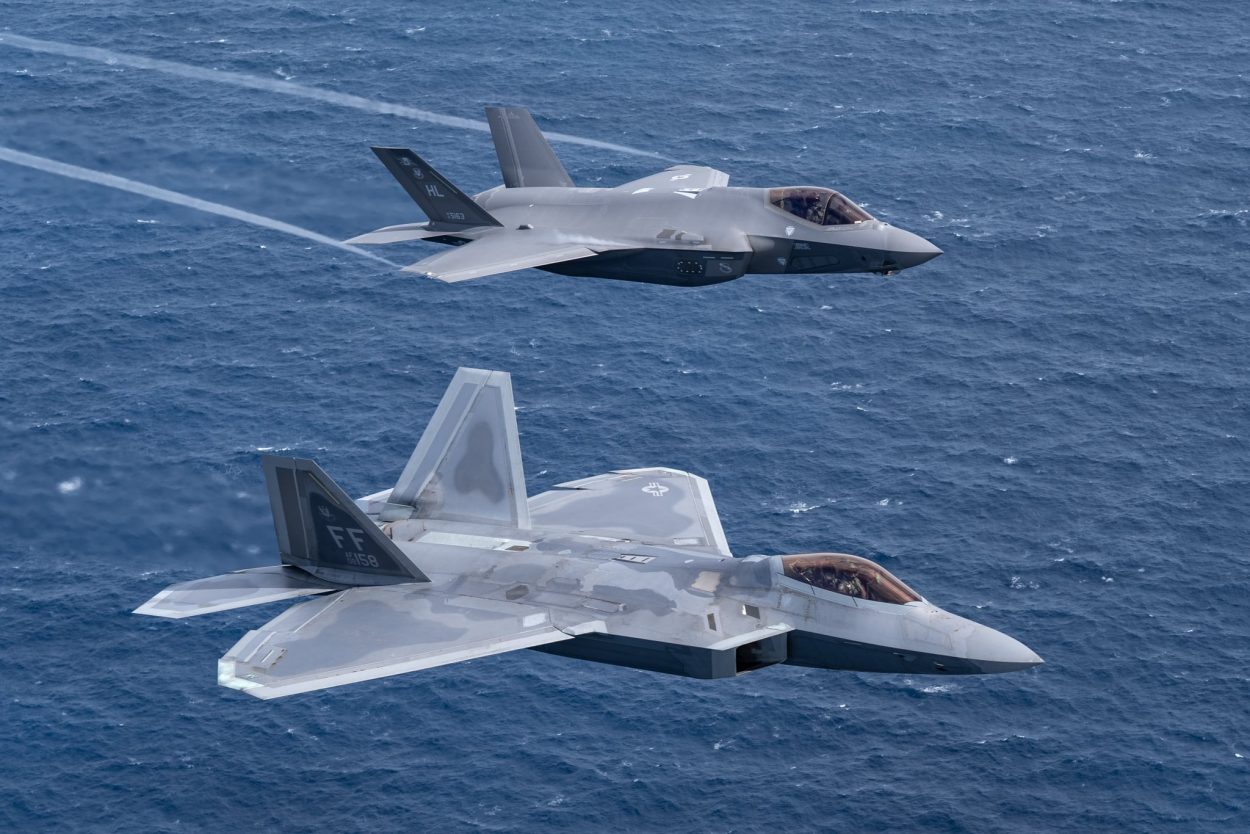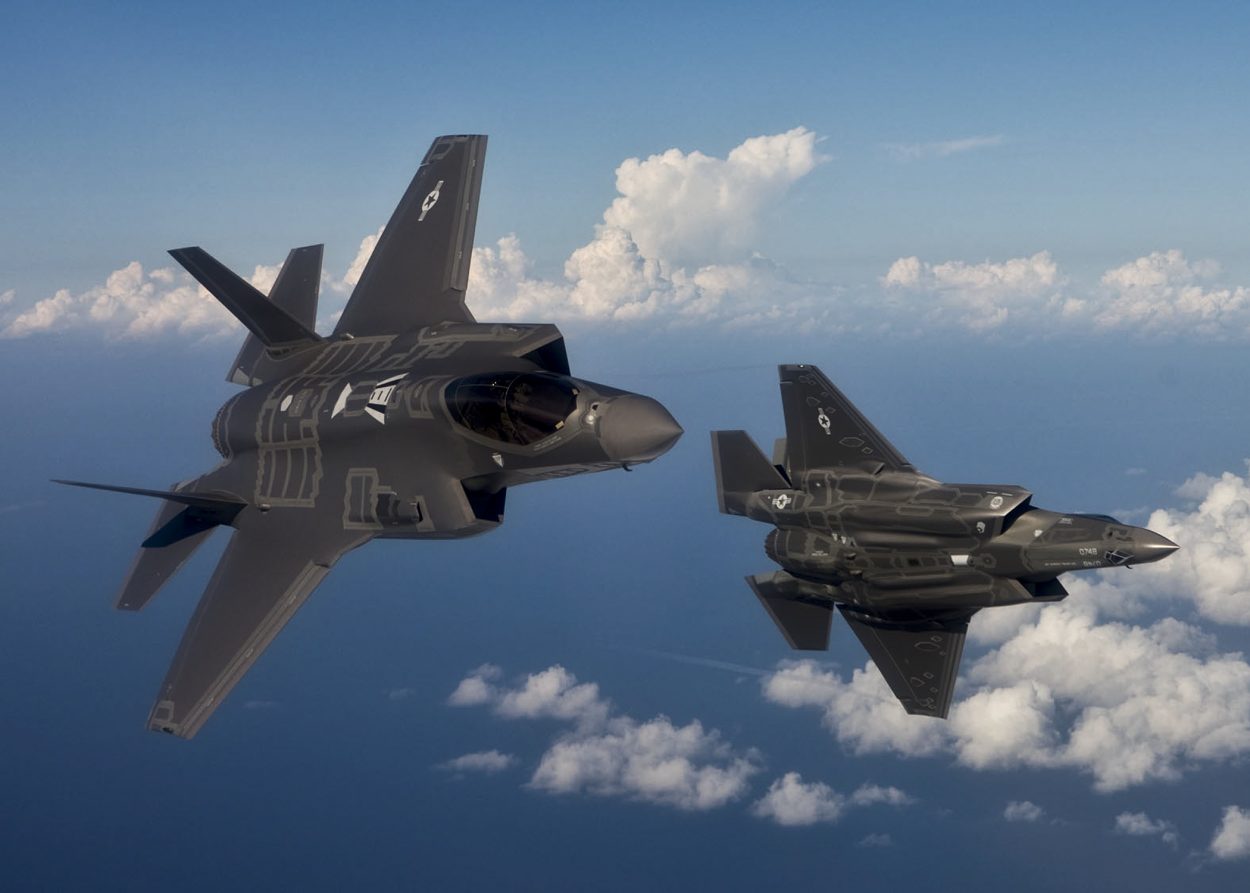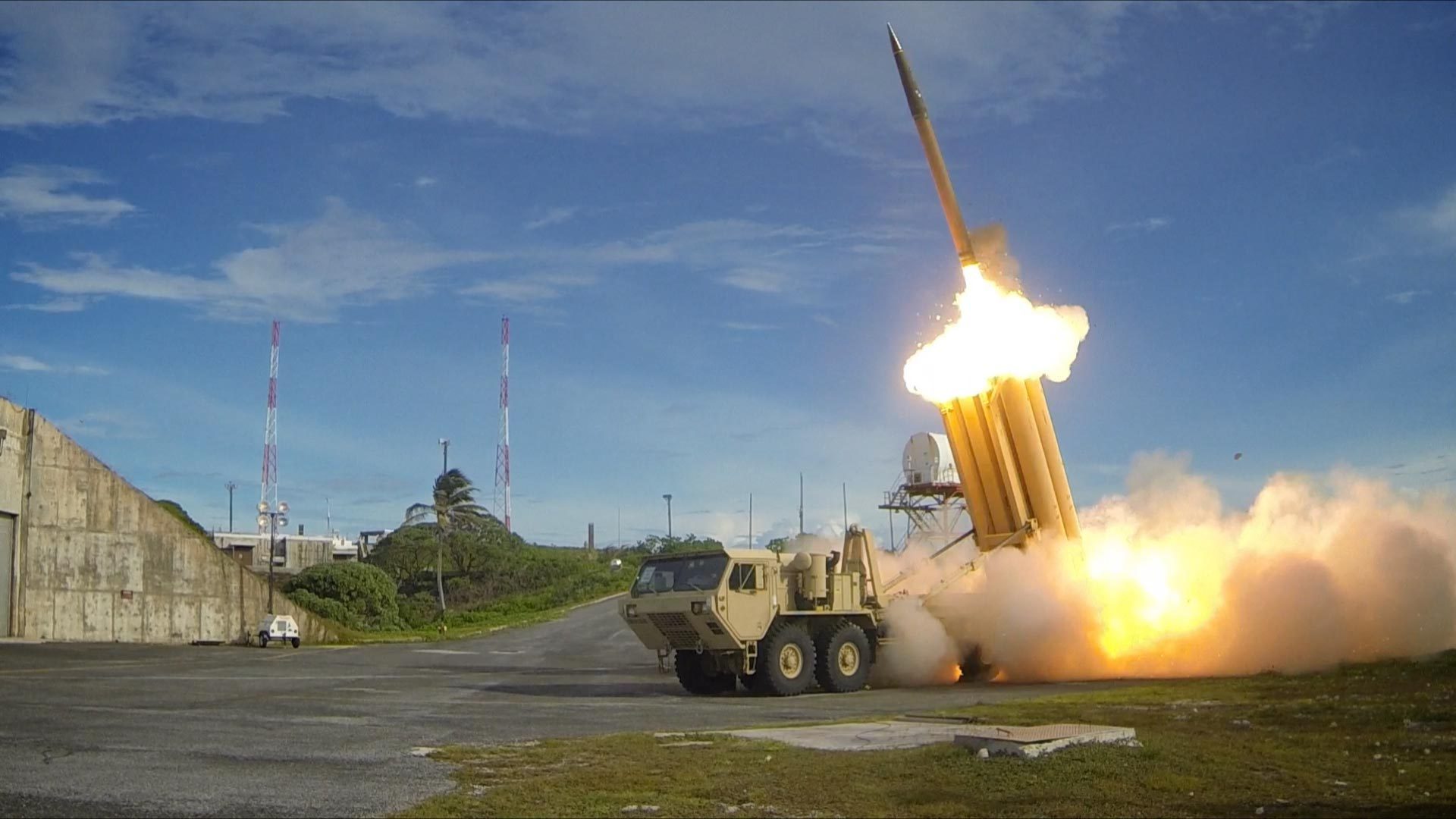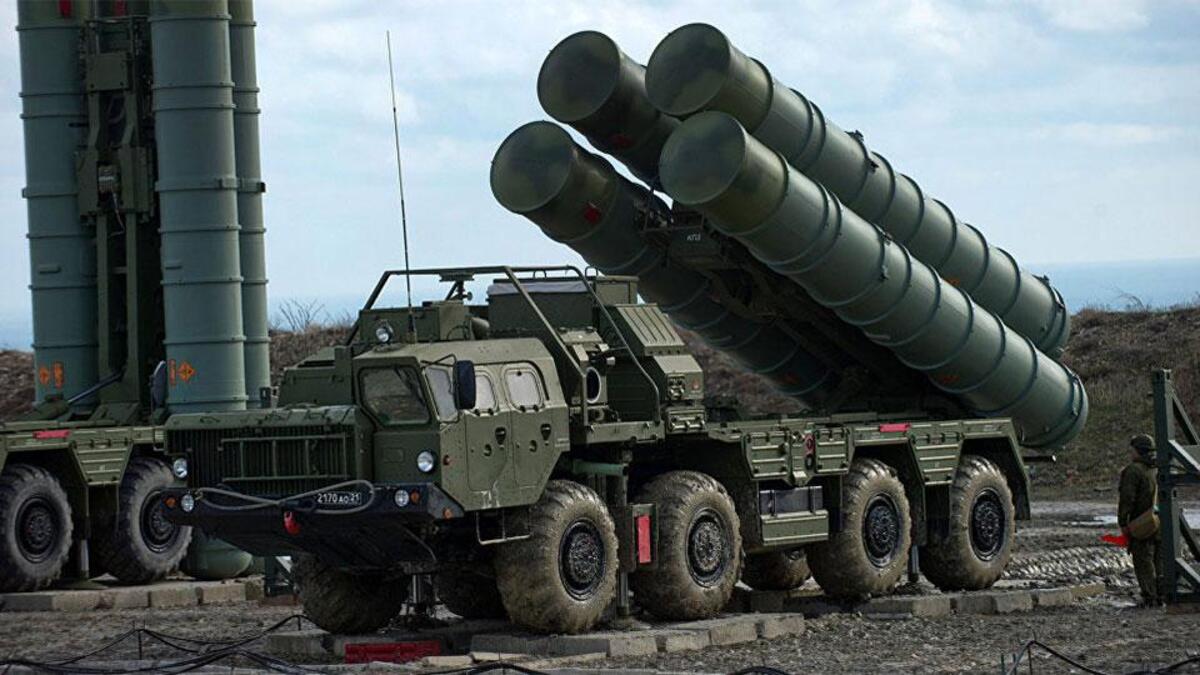The US recently decided to deploy F-22 Raptors to the UAE amid possible drone, missile attacks being launched by Houthi rebels, Gen. Kenneth McKenzie, the commander of the US Central Command said.
China Disputes British Sovereignty Over Falkland Islands; Rattles Both The UK, US With ‘Historic Deal’ With Argentina
Last week, US Defense Secretary Lloyd Austin said that the Pentagon would deploy fighter jets and a guided-missile destroyer USS Cole to assist the UAE battle regional threats.
Over the next week or so, we’re going to bring in a squadron of F-22 fighter jets, the best air superiority fighters in the world. They will also work with their UAE partners to help defend the nation,” McKenzie said in an interview with the Emirates News Agency.
Earlier, as The EurAsian Times reported, France said it would deploy its Rafale fighters to conduct aerial surveillance for UAE to defend the country’s airspace against drone and missile threats.
French Defense Minister Florence Parly announced on Twitter that Paris will provide military support to protect Emirati airspace from intrusion. “The United Arab Emirates was [a] victim of serious attacks on its territory in January,” Parly tweeted.
France has a permanent military base in Abu Dhabi and maintains robust economic and political relations with the country. Paris also signed a historic deal with the UAE and agreed to sell 80 F4 variants of Rafale fighter jets to the UAE in December, marking the biggest ever export for any French firm.
Israel, the only country to operate the F-35s in the Middle East, also offered security and intelligence support to the UAE. “We stand ready to offer you security and intelligence support in order to help you protect your citizens from similar attacks,” Bennett wrote. “I have ordered the Israeli security establishment to provide their counterparts in the UAE with any assistance, should you be interested.”
Russian MiG-31K Fighter Jet Armed With Putin’s ‘Invincible’ Kinzhal Hypersonic Missile Deployed To Baltic Region
Meanwhile, the US Mission in the UAE issued an alert warning Americans in the country about reports of a possible new missile or drone attack that may have occurred in Abu Dhabi.
“There are reports of a possible missile or drone strike having occurred over Abu Dhabi, UAE today February 9, 2022,” the Embassy said. “The Embassy advises US citizens to immediately follow the safety actions listed below and stay alert in case of additional future attacks.”
US media reported that the alert may have been spurred by a gas tank that exploded in a fire in downtown Abu Dhabi. The Houthis have not immediately claimed any responsibility for an attack on the UAE, the report added.

Middle-East Dilemma
The recent attacks on UAE by Iran-backed Houthi rebels and the retaliatory airstrikes in Yemen have opened another flashpoint in the restive Middle East. The repeated drone and missile strikes on Gulf Arab nations by the Yemen-based militia have led to these states trying to strengthen their defenses.
One country that has traditionally wielded influence in the region and has supplied arms to it is the United States. And once again, Washington has extended support to its partners against its arch-foe in the region, Iran.
The US State Department earlier cleared the next round of proposed weapons sales to the Middle East, with Saudi Arabia, Jordan, and the United Arab Emirates (UAE) preliminarily approved for deals — assuming they are not blocked by US Congress.
The new set of arms deals approved by the US State Department came shortly after the United States said it was sending its destroyer USS Cole and fighter jets F-22 Raptors and F-35s to the UAE to show solidarity and provide military support in the backdrop of repeated attacks and hostility by the Iran-backed Houthis.

The US has stated that it will continue to strengthen the defense capabilities of its regional partners, particularly Saudi Arabia and the UAE, and has highlighted arms sales as one option for doing so.
President Joe Biden, on the other hand, stated in February last year that the US will withdraw assistance to the Saudi-led coalition’s offensive operations in Yemen, as well as all “related” arms sales. After taking office, Biden had flagged the issue of human rights violation in Yemen and decided to end the aid to the coalition.
Since then, peace advocates and legislators have denounced the November approval of a $650 million sale of air-to-air missiles to Saudi Arabia as weakening that guarantee.
It is pertinent to note that there has been a perception that the American interest in the region has been waning. It could then be estimated that the US is sending a message that it is very much present in the affairs of the Middle East despite being heavily invested in China and Russia.
The US Aiding Its Partners
According to the Pentagon, the most recent approved sales to Saudi Arabia include 31 communication and navigation terminals worth $23.7 million to strengthen the kingdom’s missile defense system.
The UAE has been granted permission by the US State Department to purchase $65 million in spare components for its Homing All the Way Killer (HAWK), Phased Array Tracking Radar to Intercept on Target (PATRIOT), and Terminal High Altitude Area Defense (THAAD) missile defense systems.

“This sale supports the UAE’s existing ability to deter and defend against hostile threats by maintaining the operational readiness of critical air defense systems,” Pentagon’s Defense Security Cooperation Agency said in a public notice.
“This proposed sale will support the foreign policy and national security of the United States by helping to improve the security of an important regional partner,” it said.
Iran already has the Russian S-300 defense system, with an expected deal for the advanced S-400s. While the US is the biggest military supplier to the Gulf-Arab countries in the region, its arch-rival Russia and China have supported Iran.
Russia and Iran supported each other in the Syrian war and Moscow has advocated for the resumption of the nuclear deal with Tehran. Iran also possesses missiles that it had developed based on the Chinese HQ-2 missile.

Since the Iran-backed proxies in the region including the Houthis generally use armed UAVs to attack the targets, the US air defense systems in the region could help thwart such threats.
Further, Jordan’s request for 12 F-16C Block 70 fighter jets, radios, targeting pods, and associated ordnance components, including guided-missile tail kits, was also accepted. Lockheed Martin is the main contractor for the planes.
The State Department’s permission, however, does not imply that contracts have been signed or that talks have been completed.
The US Congress can introduce legislation to thwart the planned deals, albeit this is a time-consuming procedure that requires simple majorities in both chambers. The legislation may then be vetoed by the President, which would take a two-thirds majority vote in both chambers to override.
In 2019, the Trump administration used a section of the 1976 Arms Export Control Act, which allows a President to sell precision-guided missiles and aircraft to Saudi Arabia without going through Congress.
According to a Stockholm International Peace Research Institute (SIPRI) estimate, countries in the Middle East accounted for roughly half of all US arms transfers between 2016 and 2020. During this period, the region was the fastest rising total importer of weaponry.
Overall US arms sales fell by 21% in the 2021 fiscal year compared to the previous year during Biden’s first year, as the government pivoted away from Trump’s more aggressive sales techniques.
The Biden administration is also reviewing its arms transfer policy, which Biden is apparently hoping to change in order to place a greater emphasis on human rights, one of his key campaign promises.
However, things are now taking a U-turn. China has been making inroads into the region and has signed a 25-year agreement with Iran. Russia has been courting Turkey and Iran, and its traditional partners have been looking at different avenues, like the UAE buying Rafale from France by drawing the curtain on the F-35 deal.
Critiques and partners have pointed out that American exit from the region could leave a vacuum that will be filled by powers such as China and Russia. The geopolitical shift and Iran’s belligerence could mean that American aid to partners in the region will continue.
- Contact the author at Nytten@Gmail.com
- Follow EurAsian Times on Google News




